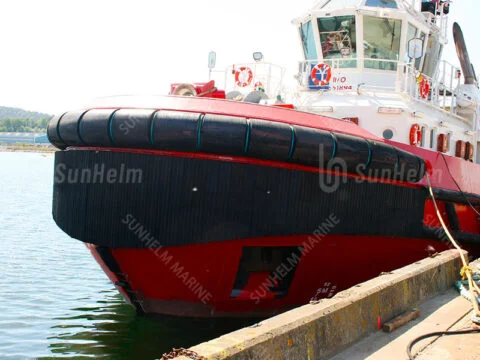A tugboat is a small, strong boat that moves other vessels by pushing or pulling them. People call these ships “tugs.” They help big ships that cannot move well on their own—especially in tight spots like harbors or canals.
1. Why We Need Tugboats
Big ships like tankers or cruise vessels steer poorly at low speeds and cannot move sideways easily. Tugboats step in to help with docking, undocking, turning, and guiding through narrow channels. At sea, those ships can travel fine alone, but near ports, they need help.

2. Main Uses of Tugboats
• Harbor Assistance
Tugboats push or pull big ships as they enter or leave port. They make docking safe and precise—even in bad weather or tight spaces.
• Towing and Pushing
They tow barges, oil rigs, floating platforms, or even ships that have no power. Sometimes they push cargo barges on rivers.
• Escort and Navigation Support
In some ports, tugboats escort large vessels through dangerous or crowded waterways. They keep the ship on course and prevent accidents.
• Emergency Rescue and Salvage
Special tugboats help when a ship is stuck, leaking, or sinking. They carry pumps, extra ropes, cranes, welding tools, and even support diving teams.
• Icebreaking
In cold areas, icebreaking tugboats carve paths through frozen waterways, so other ships can pass.
• Firefighting and Safety
Many tugs carry water cannons to fight fires. Sometimes they spray water to cool engines, avoid sparks, clean decks, or even celebrate events like ship launches.
3. How Tugboats Work
Tugs pack powerful engines in a small hull. They use bollard pull—a measure of static pulling power—to push or pull heavy ships. Modern tugs use advanced systems like azimuth thrusters or Z-drives, which rotate 360° and give excellent maneuverability.
They attach to ships with tow lines or by direct push contact. When multiple tugs work together, they can move vessels a thousand times heavier than themselves—safely at slow speeds.
4. Types of Tugboats
- Harbor tugs – help with docking, undocking, and small-scale maneuvers in port areas.
- Ocean tugs – tow vessels over long distances. These tugs need large fuel tanks and strong hulls.
- Anchor-handling tugs – manage oil rigs and heavy anchors in deep water; they have high bollard pull and extra gear.
- Salvage tugs – built for rescue operations, they carry tow lines, pumps, welding gear, and diving support.
- Pusher or river towboats – push barges or car floats, often on rivers. They have flat bows and shallow drafts.
5. Examples and Real Incidents
A tragic case in Baltimore showed the importance of tug escorts. In March 2024, a cargo ship named Dali left port with two tugs assisting it, but they left too soon. The ship drifted off course and hit a bridge, causing a collapse that killed six workers. Experts suggest that keeping tugs alongside longer might have prevented the accident.
6. Tugboat Crew and Operation
Tugboats usually carry a small crew—between 3 to 10 members. Core roles include:
- Deckhand – handles docking lines, towing setups, cleaning and safety.
- Engineer – maintains engines and mechanical systems.
- Captain/Mate – drives the tug and coordinates with ports and pilots.
- Compliance supervisor or safety officer – ensures rules and inspections.
Crews often return to shore each night and are supported by dispatch teams on land who guide the operation.
7. Why Tugboats Matter
Tugboats make port operations safe and efficient. They reduce risks of collision, grounding, or accidents in tight waterways. They support ports worldwide, manage emergencies, and even help protect infrastructure like bridges. Without tugboats, large ships would struggle to dock and move safely in harbors.
8. Future Trends in Tug Technology
The tugboat industry is going greener. Hybrid diesel-electric tugs now reduce fuel use by about 35% and lower emissions up to 80%. These vessels use batteries to help power propulsion and cut pollution.
Industry leaders are also exploring remote control, automation, and smart navigation, helping improve safety and reduce costs in busy ports.
Conclusion
Tugboats may look small, but they deliver immense muscle and control where the largest ships cannot handle: in tight, busy, or risky waters. They dock ships, tow barges, fight fires, break ice, and rescue vessels in trouble. Tugboats are essential players in the maritime world—quiet heroes keeping global trade moving and ports running safely.


